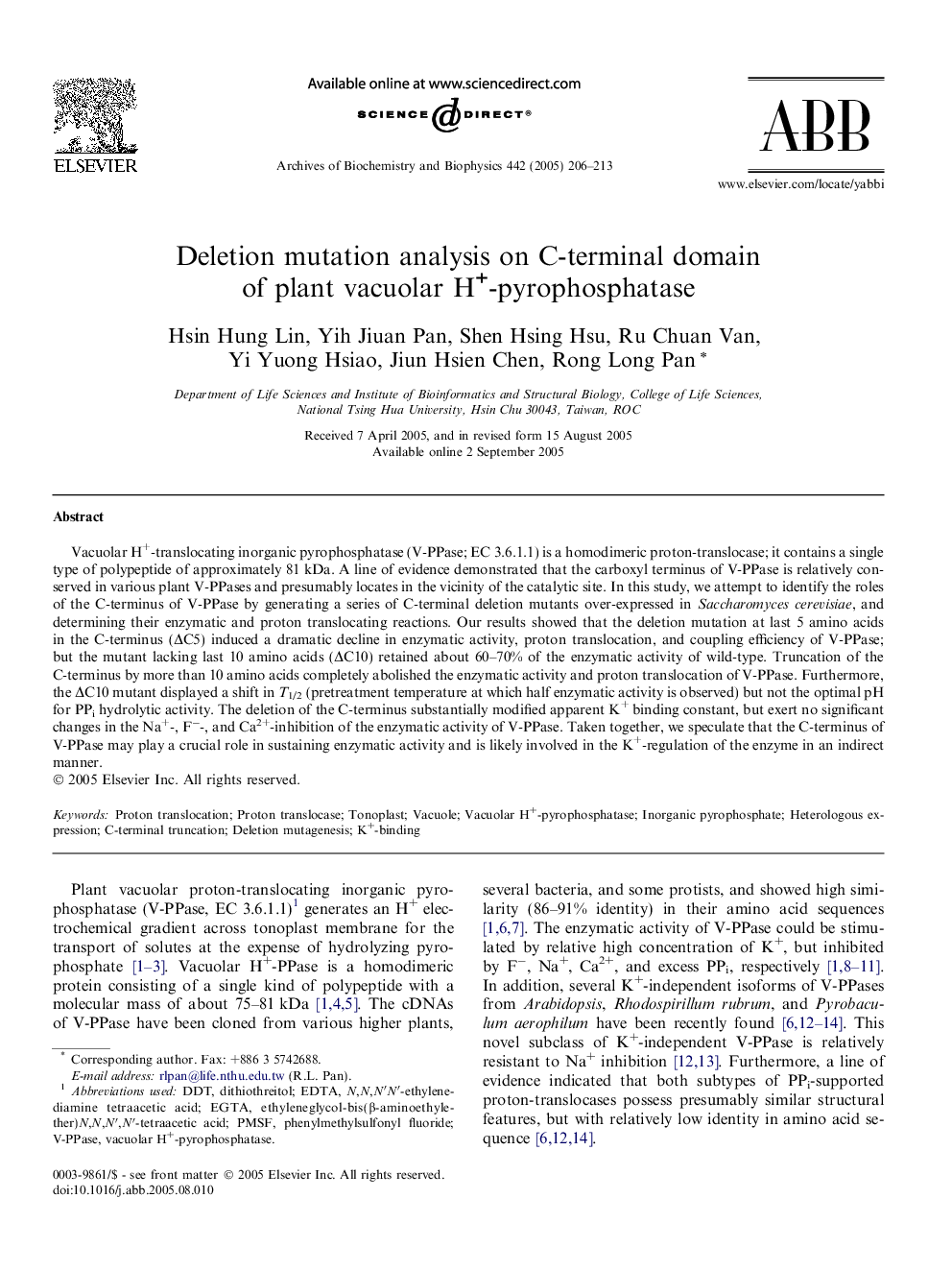| Article ID | Journal | Published Year | Pages | File Type |
|---|---|---|---|---|
| 9882100 | Archives of Biochemistry and Biophysics | 2005 | 8 Pages |
Abstract
Vacuolar H+-translocating inorganic pyrophosphatase (V-PPase; EC 3.6.1.1) is a homodimeric proton-translocase; it contains a single type of polypeptide of approximately 81Â kDa. A line of evidence demonstrated that the carboxyl terminus of V-PPase is relatively conserved in various plant V-PPases and presumably locates in the vicinity of the catalytic site. In this study, we attempt to identify the roles of the C-terminus of V-PPase by generating a series of C-terminal deletion mutants over-expressed in Saccharomyces cerevisiae, and determining their enzymatic and proton translocating reactions. Our results showed that the deletion mutation at last 5 amino acids in the C-terminus (ÎC5) induced a dramatic decline in enzymatic activity, proton translocation, and coupling efficiency of V-PPase; but the mutant lacking last 10 amino acids (ÎC10) retained about 60-70% of the enzymatic activity of wild-type. Truncation of the C-terminus by more than 10 amino acids completely abolished the enzymatic activity and proton translocation of V-PPase. Furthermore, the ÎC10 mutant displayed a shift in T1/2 (pretreatment temperature at which half enzymatic activity is observed) but not the optimal pH for PPi hydrolytic activity. The deletion of the C-terminus substantially modified apparent K+ binding constant, but exert no significant changes in the Na+-, Fâ-, and Ca2+-inhibition of the enzymatic activity of V-PPase. Taken together, we speculate that the C-terminus of V-PPase may play a crucial role in sustaining enzymatic activity and is likely involved in the K+-regulation of the enzyme in an indirect manner.
Keywords
Related Topics
Life Sciences
Biochemistry, Genetics and Molecular Biology
Biochemistry
Authors
Hsin Hung Lin, Yih Jiuan Pan, Shen Hsing Hsu, Ru Chuan Van, Yi Yuong Hsiao, Jiun Hsien Chen, Rong Long Pan,
